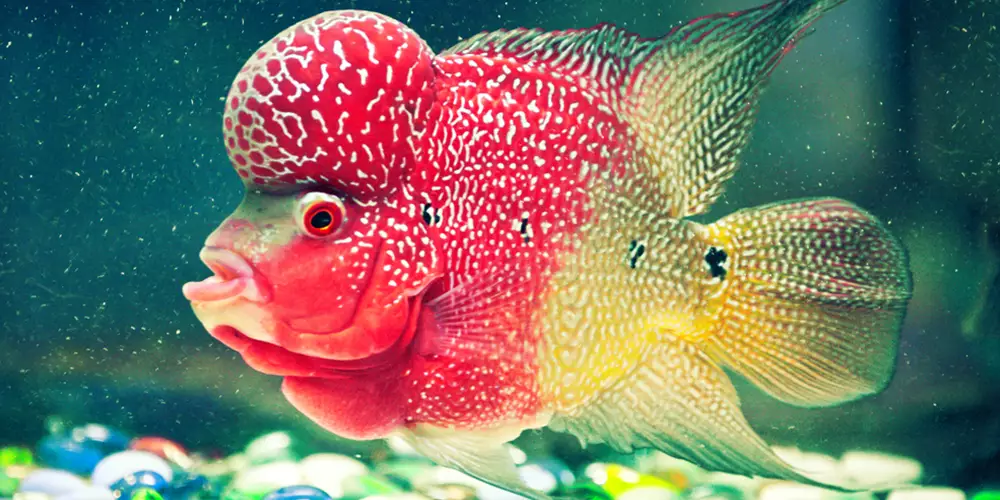Getting to see a pair of your fish mate, lay eggs, and watching those hatch and grow to maturity has to be one of the most rewarding feelings as an aquarium enthusiast. However, the process is not easy and there is much that goes into breeding the perfect fish, including nutrition and environmental conditions.

If you’re a beginner, the first step is to understand the basics of breeding implies familiarizing yourself with the particular characteristics of the fish you want to breed and general techniques that fish breeders widely use in the industry.
Is There A Specific Time That Fish Breed?
Springtime is the most common time of the year for most species of fish to breed. This can be attributed to longer days, more daylight, and warmer water. For an aquarium enthusiast, these conditions can be replicated inside your own home in order to coax the fish into breeding.
There are also other conditions and times when some fish breed. For example, during the monsoon season in the tropics, extra nutrients are often washed into rivers which creates desirable conditions for fish to mate.
When it comes to aquariums, it is important for the healthy breeding stock to be of spawn age. Depending on the species, you might need to do some research to find the appropriate nutritional and environmental needs.
Expert fish breeders like Koi Kompanion breed healthy fish and fry by ensuring that the breeding and living conditions for fish are exactly what they require. This includes adjusting the cover, temperature, pH, live foods, lighting, and pairing the right species of fish together.
How Do I Choose The Optimal Pair Of Fish For Breeding?
When it comes to picking the fish to get them to mate, your best bet is maximizing your chances. This can be done by picking the fish that are the most vibrant and colorful, have the biggest size, and are the most active.
Late winter or early spring is the optimal time for finding fish that are ready to mate and breed. However, in tropical regions, fish are more likely to breed in the spring season. In order to get the fish to mate, it is important to ensure that the fish are compatible.
In some cases, one partner might bully the other so it is essential that the chosen pairings get along well in order to produce offspring. As a rule of thumb, fish that are aggressive by nature shouldn’t be kept in the same tank or pond inhabited by peaceful fish.
What Is The Appropriate Method Of Caretaking Of Fish?
The surface, food, and setting are very important when it comes to the breeding of fish and looking after them. A pair of fish that is meant to produce offspring should be kept in a separate aquarium that has the appropriate spawning substrate or décor.
This is different depending on the species and their egg-laying method and should be adjusted accordingly. The feed should be high in protein content and the fish should be fed more often than their regular feeding pattern.
This is to ensure that the fish have the energy needed to mate and lay eggs alongside their own needs for growth and recovery. In some cases, the male and female should be kept in separate containers where they can see each other.
This increases the need and chances of the fish mating when they get the chance. Finally, the temperature and pH value of the water should be according to the recommended settings for that particular species of fish.
What Does “Ph Value” Mean?
The pH value of water refers to how acidic or alkaline the water is. The acid/base balance of the water is tested through pH testing kits. The recommended condition varies depending on the species. Some fish prefer an acidic condition while other species might be inclined towards water with a higher pH.
You can ask professional breeders in your area or join social media groups of fish enthusiasts to learn about the particular pH preferences of the species you’re trying to breed.
If The Newly Born Fry Require Infusoria, How Do I Produce That?
As a fish enthusiast, watching your fish finally lay eggs and then watching those eggs hatch to produce fry can be highly rewarding. However, that is often followed by one of the most difficult challenges an aquarium enthusiast faces.
It can be very hard to find food that is small enough to be consumed by the newly born fry so that they can get the nourishment they need in order to survive. Infusoria is often the food of choice that most people go for to feed their fry and consists of bacteria, protozoa, algae, and tiny crustacea.
Infusoria can be grown at home by simply placing a leaf of lettuce in the aquarium at the time of the hatching. After a week, the leaf should be replaced. By the end of the second week, the fry will be grown enough to consume any store-bought powdered foods.
Can Fry Be Fed Other Food?
Store-bought or commercially sold products are not the only food that can be fed to fry. They can also consume things like the yolk of a hardboiled egg which is crushed and turned into a paste with a little water.
When the fry has grown a bit, they can also be fed tubifex worms and flake fish food which has been finely ground up.
It is essential that the fry are fed adequately, which can be up to six times a day. Not getting the appropriate amount of food can cause the fry to die of starvation. But it’s almost important not to overfeed the fish, as that can also lead to complications.
As Someone Who Is Just Starting Out And Does Not Have A Lot Of Space, What Size Aquarium Should I Get?
Recommending aquarium sizes can be tricky as this depends on how much space you have and how much space you’re willing to sacrifice. It also depends on how much effort you want to put in as larger aquariums require more maintenance.
A safe bet is a 10-gallon aquarium, especially for someone who is just getting their feet wet. This size is manageable and fairly inexpensive as compared to other, larger aquariums. It also gives you enough space to breed any species you might want to as a beginner in the space.
How To Start?
For someone new to this hobby, it is important that you do not bite off more than you can chew. While the thought of breeding more exotic species might be attractive, they can be a lot to handle for beginners, and losing fish and their fry can be off-putting for some.
Start with species that are easy to manage such as the zebra danio and rosy barb. Once you have sufficient experience, you can step up your game and try your hand at breeding more exotic species.
 World inside pictures Collect and share the best ideas that make our life easier
World inside pictures Collect and share the best ideas that make our life easier








